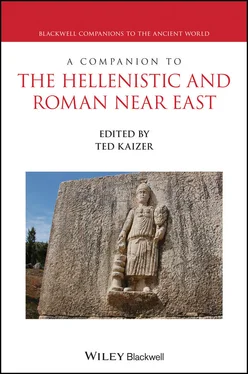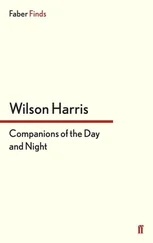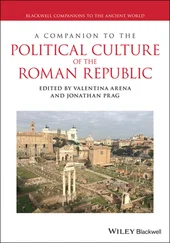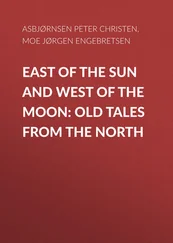351 320
352 321
353 322
354 323
355 324
356 325
357 326
358 327
359 328
360 329
361 330
362 331
363 332
364 333
365 334
366 335
367 336
368 337
369 338
370 339
371 340
372 341
373 342
374 343
375 344
376 345
377 346
378 347
379 348
380 349
381 350
382 351
383 352
384 353
385 354
386 355
387 356
388 357
389 358
390 360
391 361
392 362
393 364
394 365
395 366
396 367
397 368
398 369
399 370
400 371
401 372
402 373
403 374
404 375
405 376
406 377
407 378
408 379
409 380
410 381
411 382
412 383
413 384
414 385
415 386
416 387
417 388
418 389
419 390
420 391
421 392
422 393
423 394
424 395
425 396
426 397
427 398
428 399
429 400
430 401
431 402
432 403
433 404
434 405
435 406
436 407
437 408
438 409
439 410
440 411
441 412
442 413
443 414
444 415
445 416
446 417
447 418
448 419
449 420
450 423
451 424
452 425
453 426
454 427
455 428
456 429
457 430
458 431
459 432
460 433
461 434
462 435
463 436
464 437
465 438
466 439
467 440
468 441
469 442
470 443
471 444
472 445
473 446
474 447
475 448
476 449
477 450
478 451
479 452
480 453
481 454
482 455
483 456
484 457
485 458
486 459
487 460
488 461
489 462
490 463
491 464
492 465
493 466
494 467
495 468
496 469
497 470
498 471
499 472
500 473
501 474
502 475
503 476
504 477
505 478
506 479
507 480
508 481
509 482
510 483
511 484
512 485
513 486
514 487
515 488
516 489
517 490
518 491
519 492
520 493
521 494
522 495
523 496
524 497
525 498
526 499
527 500
528 501
529 502
530 503
531 504
532 505
533 506
534 507
535 508
536 509
537 510
538 511
539 512
540 513
541 514
542 515
543 516
544 517
545 518
546 519
547 520
548 521
549 522
550 523
551 524
552 525
553 526
554 527
555 528
556 529
557 530
The origins of this volume go back to a time before the civil wars in the Middle East led to unprecedented destruction of the heritage from the Hellenistic and Roman periods in the Levantine lands. In the meantime, our field of research will probably have been changed for ever. It is to be hoped that a lasting peace will eventually be there to enjoy for the long-suffering population of the region.
At the outset, I must thank Al Bertrand, then Editorial Director for Social Science and Humanities Books at Wiley-Blackwell, for commissioning this Companion. Had I known at the time the mammoth task which editing a project of this size involved, I would surely have turned down his invitation … In the years since then, I have dealt with various members from the team at Wiley-Blackwell, and am grateful for the support of Kelley Baylis, Janani Govindankutty, Haze Humbert, Allison Kostka, Ajith Kumar, Jennifer Manias, Roshna Mohan, Elizabeth Saucier, Niranjana Vallavan, and Galen Young-Smith. In particular, I should like to acknowledge the guidance, patience, and kindness of Will Croft, Pallavi Gosavi, Todd Green, Andrew Minton, Skyler Van Valkenburgh, and Dhivya Vaithiyanathan, who together oversaw the final stage of the process. And I am grateful to Moira Eagling and Monica Matthews for their careful copy editing.
A warm thank-you for their splendid chapters and much-appreciated patience goes to all contributors to this volume. As is to be expected for a book of this size, some chapters were originally submitted substantially earlier than other ones, but all colleagues have responded in cheerful collegiality to my requests to ensure that the final version would be as up-to-date as possible. Amongst the contributors, I must single out (for reasons known to them) Jen Baird, Kim Czajkowski, Alberto Rigolio and, especially, Michael Sommer. I am truly grateful.
My thanks are also due to Eris Williams Reed for her insightful comments on an earlier draft of my introduction.
This volume is dedicated to the memory of Sir Fergus Millar, who passed away in the summer of 2019. Fergus was not a great fan of companions or handbooks, but when I asked him for his blessing of the project when I received the original commission he thought that, on the Hellenistic and Roman Near East, there might actually be some use for it. I am sorry that he did not live to see the final product. But surely the reader will perceive his presence as shining through in many of the pages that follow.
Cover Relief of priest in front of temple at Niha in the Bekaa Valley. © R. Raja.
Figure 3.1 Near Eastern section from the Peutinger Table. Freely downloadable at https://www.cambridge.org/us/talbert/index.html, Map B, TP2000seg9 (detail).
Figure 10.1 Distribution of the scripts of the oases and nomads in Arabia. © A. Al-Jallad.
Figure 12.1 Bottom part of gigantic marble statue of Aphrodite from Gerasa on the day of its discovery (13 May 2016). © T.M. Weber-Karyotakis.
Figure 12.2 Painted synagogue from Dura-Europos, reconstructed in the National Museum of Damascus. © L. Dirven.
Figure 12.3 Basalt lintel from Suweida in the Hauran, showing Hera (detail of the judgment of Paris), now in the Louvre (cat. AO11O77). © T. Kaizer.
Figure 12.4 Funerary relief from Palmyra, now in the Louvre (cat. AO4147). © T. Kaizer.
Figure 13.1 Colonnaded main street in Apamea. © R. Raja.
Figure 13.2 Capital from the Sanctuary of Artemis in Gerasa. © R. Raja.
Figure 13.3 The Sanctuary of Artemis in Gerasa seen from the west. © R. Raja.
Figure 13.4 Temple A in Niha, Beka’a Valley. © R. Raja.
Figure 14.1A Silver stater of Aradus, fourth century bce, issued in the decades before the defeat of the Persians by Alexander the Great. On the obverse, a laureate head of a bearded deity; on the reverse, a galley with stylized waves beneath; Phoenician letters mem aleph ayin above (the letter mem is off the flan).
Figure 14.1B Athenian tetradrachm or Syrian imitation of one, fourth century bce. The obverse has a head of Athena; the reverse depicts her attribute, an owl, with a sprig of olive. The test cut on the reverse suggests that such coins were probably appreciated more for their metallic worth than their symbolic monetary value.
Figure 14.1C Copper-alloy coin of Alexander the Great (336–323 bce), attributed to Byblos and issued between c. 330 and 320 bce. The obverse bears a head of a youthful Heracles, wearing the skin of the Nemean lion; the reverse has a bow in a bow case and a club, accompanied by the legend “of Alexander.”
Figure 14.1D Silver tetradrachm in the name of Alexander the Great, attributed to Byblos and issued between c. 330 and 320 BCE. Like the previous coin (14.1C) the obverse bears the head of Heracles; the reverse has a figure of Zeus seated on a throne, holding an eagle, and the legend “of Alexander.” The Greek monogram in front of Zeus has been understood as a monogram of a King Adramalek of Byblos (the first three letters of his name in Greek, ADR).
Читать дальше












